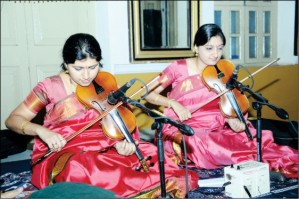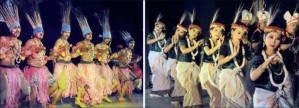The must visit tourist destination cries for restoration

by S.N. Venkatnag Sobers
Following the list of the heritage sites in Mysore city is the Majestic Devaraja Market, a product of visionary Nalwadi Krishnaraja Wadiyar. Devaraja Market popularly known ‘Dodda Market’ in Mysore was constructed in the year 1900. Though, the construction was started in the year 1900, it was developed stage by stage over the years.
The market was named after the late Devaraja, one among the 25 Kings of Mysore, who was instrumental in constructing steps to the Chamundi Hills and also installation of Nandi Statue atop the hill. Devaraja Market has been built using Wattle (a composite building material used for making walls with wood and mud) and each of the walls at the market is of 13 inches. There are around 700 to 800 shops in the market which have been a major source of income to vendors. It has four entrance points two on the Sayyaji Rao Road, one each from Dhanvanthri Road and opposite to Dufferin Clock Tower.
It is also said that a small market was functioning at place during the rule of Tippu Sultan which was later developed into a market. Devaraja Market, which is now around 114 years old, is a place where all kinds of items are sold.
The vision of Nalwadi Krishnaraja Wadiyar was such that the market was divided into various divisions with separate sections for selling flowers, vegetables, fruits, coconut, puja materials, Onion and Potato, Jaggery, Puffed Rice and others. This was one of the unique markets in the then Mysore State.
According to historians, the first class of 1st batch of Mysore Medical College (MMC) was held at Devaraja Market premises. The building also housed Devaraja Police Station and Railway Office of Mysore State. At the time when Sir Mirza Ismail was the Dewan of Mysore, Devaraja Market hosted annual fair which was held continuously for 30 years.
Unfortunately, the Mysore City Corporation (MCC) has failed to maintain the heritage structure which has contributed for the dilapidation of the building. There was a major fire accident in 2005 which ravaged 18 shops. The vendors have been requesting the authorities to take up repair works as they fear that the ancient structure might collapse like it happened with Lansdowne Building.
Though the authorities have been informing about the plan to restore Devaraja Market, nothing has been executed so far. There have been several inspections made by officials but no solid solution yet.
Now, after several agitations and discussions, Rs. 10 cr has been allotted for restoration of Devaraja Market in CM’s special grant of Rs. 100 cr to Mysore, said former Deputy Mayor and Area Corporator M.J. Ravikumar, speaking to Star of Mysore.
He said that the market will have all modern facilities and would be restored keeping the heritage structure in mind. “Heritage Street Lamps will be installed at various places in the market to give it a heritage look. This apart, the vendors at the market will be re-allotted their shops after the renovation works are completed,” he said.
According to sources, the Mysore City Corporation (MCC) has sent a detailed project report on the restoration of the Devaraja Market to the State Government which has been cleared.
Sources added that the works would be taken up only after Dasara festivities and would be completed as soon as possible. With the Devaraja Market crying to be restored, the officials need to speed up the process to retain the heritage structure.
Boti Bazaar: There have been constant complaints about garbage being dumped near the Devaraja Market by the meat vendors of ‘Boti Bazaar,’ which is located adjacent to the main Devaraja Market. Tonnes of meat is sold every day in the market, but steps have not been taken to dispose the waste scientifically.
For people commuting on the road, it has become difficult as the waste is dumped on the roadside. Though, the MCC has been clearing the waste on a daily basis, much more has to be done to provide healthy and hygienic environment around the market.
There are around 100 meat stalls in the newly constructed meat market, but the authorities have not taken measures to prevent the meat being exposed to street dogs. It is also a favourite place for the rodents which are seen moving around freely inside the market.
The market is a source of daily bread to around 150 people who work in the meat market. Earlier, these shops were functioning outside the newly-constructed market, as the MCC has vacated them after having promised to construct a new market area. Few of the vendors had also filed a case against the Mysore City Corporation against allotment of shops through tender process.
The new meat market is constructed at a cost of Rs. 1 crore and was inaugurated on April, 2012. With meat vendors not agreeing to the terms and conditions of the Mysore City Corporation, the newly-constructed building had been laying vacant since one year.
It was only recently that the problems related to the allotment of the shops had been settled and vendors decided to shift inside the new meat market. But, still there are a few vendors who continue to operate outside the market.
Market needs to be upgraded and most importantly there is a need for the City Corporation to initiate measures for maintaining hygienic environment in and around the market
source: http://www.starofmysore.com / Star of Mysore / Home> General News / August 09th, 2014






